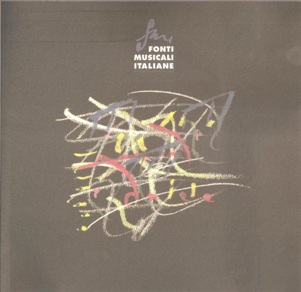La musica a Roma nel secondo Settecento: testimonianze nelle lettere familiari dell'erudito Pierantonio Serassi
Abstract
Appartenente ad una celebre famiglia di costruttori d'organi, Pierantonio Serassi fu chiamato a Roma, nel 1754, come rettore del collegio Cerasoli. Rimarrà nella capitale quasi continuativamente fino alla morte avvenuta nel 1791. Fu, oltre che musicista dilettante e appassionato melomane (suonava, fra l'altro, il cembalo e il violino), insigne letterato. Pubblicò studi sui grandi della letteratura italiana: Dante Alighieri, Pietro Bembo e soprattutto Torquato Tasso. Di quest'ultimo fu il primo grande studioso in senso moderno sia promuovendo nuove edizioni delle sue opere (es. l'Amadigi, nel 1755), sia curandone una biografia, completata nel 1785, che si basa più sulla documentazione storica che sulla tradizione leggendaria. Pierantonio Serassi, durante il suo lungo soggiorno romano, scrive lunghe lettere ai familiari rimasti a Bergamo, ricche di puntuali riferimenti alla vita musicale della capitale. In ambito sacro, grazie al suo ruolo, ha il privilegio di assistere ad imponenti funzioni anche non accessibili al pubblico; frequente la sua presenza anche ad esecuzioni di musica profana. Egli rende dunque testimonianza, con curiosità, dell'imponente apparato musicale di certe celebrazioni liturgiche svoltesi alla presenza del papa o di cardinali. Descrive, con cognizione di causa, gli organi presenti in città, riferisce dell'attività dei maestri di cappella, maestri concertatori, cantanti e strumentisti più in vista, commenta le esecuzioni a cui ha modo di assistere. Attesta il perpetuarsi di un repertorio tradizionale come quello legato ai “famosi misereri” o allo Stabat Mater di Pergolesi. Commenta la massiccia presenza di musica per i festeggiamenti legati all'elezione di un nuovo papa o alla consacrazione di nuovi cardinali. Riferisce di incresciosi fatti di cronaca scaturiti dall'eccessiva ressa nell'assistere a manifestazioni col concorso della musica. Egli ci dà conferma di come la musica segni, in maniera pregnante, non solo i passaggi istituzionali e i momenti più significativi dei suoi eminenti protagonisti, ma anche le manifestazioni popolari della vita cittadina. Serassi stesso tiene i contatti con alcuni maestri di cappella e musicisti attivi a Roma.
******Music at Rome in the late eighteenth century as evidenced in the letters of the erudite Pierantonio Serassi
Member of a renowned family of organ makers, Pierantonio Serassi came to Rome in 1754 on his appointment as Rector of the Cerasoli College and remained in the capital almost continuously until his death in 1791. In addition to being an amateur musician and enthusiastic music-lover (he played, among other instruments, the harpsichord and the violin) he was a distinguished man of letters, publishing treatises on the greats of Italian literature: Dante Alighieri, Pietro Bembo and – above all – Torquato Tasso. He was the first important scholar, in the modern sense, to take an interest in Tasso, both promoting new editions of his works (for instance the Amadigiin 1755) and in publishing a biography – completed in 1785 – which was based on historical documentation rather than on legendary tradition. During his long residence in Rome, Pierantonio Serassi wrote lengthy letters to those members of his family who had remained in Bergamo, full of detailed references to the musical life of the capital. Thanks to his position as rector, he had the privilege of attending impressive religious functions, even those not open to the general public; he also frequently attended performances of secular music. Altogether he is a valuable witness, and one full of curiosity, of the impressive musical panoply of certain liturgical celebrations held in the presence of the Pope and cardinals. He describes, with extensive knowledge of the subject, the organs to be found in the city, refers to the activity of choirmasters, conductors, singers and instrumentalists, comments on the performances at which he was present. He confirms the continuance of a traditional repertoire like that connected with the famosi misereri or with Pergolesi's Stabat Mater and remarks on the massive presence of music in the festivities after the election of a new pope or at the consecration of new cardinals. He refers to the regrettable news resulting from the presence of excessive crowds attending events with music. He confirms how music marked, in a meaningful way, not only the institutional occasions and the more significant moments of the eminent protagonists involved in them, but also the popular events of city life. Serassi himself kept in touch with several choirmasters and musicians active at that time in Rome.
Downloads
Published
Issue
Section
License
© CIDIM
Tutti i diritti riservati


